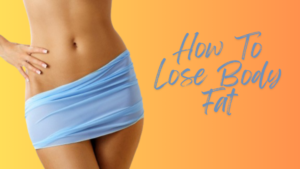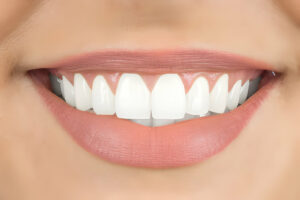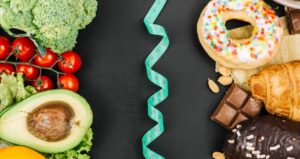Table of Contents
ToggleIntroduction to the Dukan Diet: A Revolutionary Approach for Women Seeking Weight Loss
The Dukan Diet presents a clear, scientifically supported roadmap tailored for women aiming for weight loss. It distinguishes itself with a high-protein, low-carb strategy, promising rapid and safe weight loss for women. The brainchild of Dr. Pierre Dukan, this diet focuses beyond mere weight reduction, advocating for a sustainable lifestyle overhaul. It aims to enable women to achieve and maintain their ideal weight over the long haul.
Uniquely, the diet unfolds in four major phases:
- Attack: Kickstart metabolism with protein-rich foods.
- Cruise: Incorporates vegetables, adding balance.
- Consolidation and Stabilization: These final stages are crucial for preserving the weight loss achievements. Guided by diverse and tasty Dukan Diet recipes, you’re not just working towards weight loss; you’re stepping into a rewarding dietary journey, crafted to keep you fulfilled and healthy.
Why the Dukan Diet? Key Benefits Tailored for Women
Weight loss presents distinct challenges for women, and the Dukan Diet meets these head-on. Its approach, emphasizing high-protein and low-carbohydrate intake, is crafted to foster fast weight loss for women while safeguarding long-term health and meeting nutritional needs. Its structured format and promise of swift, sustainable results—without feelings of deprivation—have earned it wide acclaim among women.
Designed for Quick Results
The Dukan Diet’s early phase, known as the Attack phase, prioritizes pure protein consumption. This strategy aims to kick-start metabolism and trigger rapid weight loss. Many women report remarkable results during this phase, such as significant reductions in weight and belly fat, bolstering motivation to stick with the plan.
–
Research indicates that high-protein diets can significantly hasten weight loss for women. For example, one study showed women on the Dukan Diet averaging a weight loss of 33 pounds in 8-10 weeks, with a daily intake of around 1,000 calories and 100 grams of protein. This makes it a compelling fast weight loss for women option, although the focus remains on being a safe weight loss for women alternative.
–
However, experts caution against rapid weight loss’s potential downsides, advocating for a more gradual, steady approach to be healthier and more sustainable over time. Thus, questions such as ‘ Is the Dukan Diet safe? ‘ can be addressed by pursuing the Dukan Diet under medical supervision to balance quick results with safety.
Focus on Lean Protein: Boosting Metabolism & Reducing Appetite
Central to the Dukan Diet is lean protein, a powerhouse for weight loss and metabolic health. Foods rich in protein enhance satiety, which means you’re likely to consume fewer calories by feeling fuller for longer. This is especially beneficial for women battling diet-induced hunger and cravings.
–
Furthermore, lean protein demands more energy from the body to digest, absorb, and process—a phenomenon known as the thermic effect. This contributes to an increased metabolic rate, aiding in additional calorie burn. Staples of the Dukan Diet include nourishing sources like chicken, turkey, fish, and eggs, supporting not only weight loss but also muscle strength and growth.
–
Integrating lean proteins can stabilize blood sugar levels too, decreasing the risk of developing insulin resistance. This is particularly pertinent for women with conditions like polycystic ovary syndrome (PCOS) or those undergoing menopause, as maintaining steady blood sugar is critical for weight management and overall health.
Four Phases for Sustainable Weight Loss
The Dukan Diet’s journey through four distinct phases aids in achieving lasting weight loss. From the initial swift loss in the Attack phase, it progresses to the Cruise phase, which reintroduces vegetables and broadens the diet’s nutrient spectrum. The Consolidation phase plays a pivotal role in avoiding weight rebound by slowly incorporating a more diverse food selection and periodic treats. This gradual reintroduction helps ease the transition to a new dietary lifestyle without feelings of restriction.
The final Stabilization phase is about preserving the weight loss achievements long-term. It introduces simple habits, like daily oat bran and consistent exercise, dovetailing with a continued emphasis on protein. Allocating a day each week to pure protein intake mirrors the Attack phase, aiding in maintaining weight loss and muscle mass essential for metabolic health.
By methodically progressing through these phases, the diet offers women a structured path from initial weight loss to sustained health, with clear guidelines and milestones for success along the way.
Adaptable and Female-Friendly: Meeting Nutritional Needs
The Dukan Diet plan for women ‘s flexibility ensures it accommodates women’s unique nutritional needs. It endorses dietary elements like oat bran for fiber and digestion, alongside lean protein for muscle and bone health. The ability to customize the diet based on individual health goals underscores its appeal to a female demographic, making the Dukan Diet for women a relevant choice.
Though high in protein, balancing nutrient intake is key. Certain studies signal potential nutritional shortfalls among followers. Thus, supplementing the diet with a multivitamin or specific supplements is advisable to ensure a comprehensive nutrient profile.
Offering a blend of rapid results and mindful health considerations, the Dukan Diet meal plan for women is a formidable option for women aiming for weight loss. Nonetheless, achieving balance and prioritizing long-term health is critical, with professional guidance recommended to customize and optimize the diet effectively.
Exploring the Four Phases of the Dukan Diet
Phase 1: The Attack Phase – Kickstarting Weight Loss
The inaugural Attack Phase of the Dukan Diet paves the way for rapid weight reduction. Spanning 2 to 7 days, this phase concentrates on consuming high quantities of pure proteins. Unlimited intake of lean meats, poultry, fish, and fat-free dairy effectively jump-starts metabolism and initiates the fat-burning mechanism. The ample protein levels also suppress hunger, leading to a decrease in calorie intake.
In this initial stage, the body shifts into ketosis, using fat as its primary energy source due to reduced carbohydrate consumption. To support this process, it’s crucial to ingest a minimum of 1.5 tablespoons of oat bran each day for digestion and hydrate generously with water. Even moderate physical activities, like walking, are recommended to enhance the diet’s impact.
One should note, that the Attack Phase’s duration depends on personal weight loss objectives and dietary history. Medical advice is strongly recommended for those considering this phase beyond five days or with substantial weight objectives.
Phase 2: The Cruise Phase – Steady Weight Loss through Protein and Vegetables
Following the Attack Phase, the Cruise Phase reintroduces vegetables to the diet, alternating between pure protein days and protein-and-vegetables days. This phase persists until achieving the goal weight. By adding non-starchy vegetables, the diet becomes nutritionally rounded, ensuring essential nutrients are consumed whilst continuing the journey of weight loss.
Weight reduction becomes more gradual during the Cruise Phase, with an average loss of 1 pound every three days. The diet now allows a choice of 100 foods, with 68 from protein sources and 32 from non-starchy vegetables. Individuals are encouraged to tailor the alternation of Pure Protein (PP) days and Protein and Vegetable (PV) days to fit their lifestyles, alongside recommending at least 30 minutes of brisk walking daily to bolster weight loss efforts.
The duration of the Cruise Phase is tailored to each individual’s progress and may span several months. Persistent discipline and commitment to the dietary guidelines are vital for consistent and healthy weight loss during this pivotal phase.
Phase 3: The Consolidation Phase – Preventing Weight Rebound
The Consolidation Phase aims to avert the typical rebound in weight post-rapid loss. Calculated at five days per pound lost, this phase carefully reintroduces a wider variety of foods. Dieters now add servings of fruits, bread, cheese, and starchy foods to their meals, plus a weekly ‘celebration meal’ to enjoy any desired food in moderation.
This pivotal phase acts as a bridge to a balanced and sustainable diet, emphasizing the importance of portion control and ongoing protein consumption to prevent weight regain. It is a critical period for the body to adapt to a diversified diet while maintaining the progress achieved.
Commitment to the Consolidation Phase principles is crucial for preserving weight loss success. It challenges the dieter’s ability to find equilibrium between strict adherence and dietary flexibility, paving the way for lasting healthy eating habits.
Phase 4: The Stabilization Phase – Maintaining Your Ideal Weight
The Stabilization Phase, marking the diet’s culmination, is dedicated to preserving the achieved ‘True Weight’ indefinitely. Here, no food is forbidden. However, adherence to three immutable rules is essential: consuming 3 tablespoons of oat bran daily, opting for stairs over elevators, and dedicating a day each week to a pure protein intake, reminiscent of the Attack Phase.
This phase underscores the shift from dietary limitations to lifestyle adaptations. It encourages establishing habits that support ongoing weight maintenance and overall health, like engaging in regular physical activity and practicing mindful eating.
By embracing the Stabilization Phase principles, individuals can maintain a diverse diet without the worry of weight rebound. It symbolizes a lifelong dedication to the healthy practices developed in the preceding phases, ensuring sustained success.
Safety and Efficacy: Is the Dukan Diet Right for You?
Considering the Dukan Diet for weight loss? How the Dukan Diet works and the benefits of the Dukan Diet have to be weighed against potential drawbacks. Known for its high-protein, low-carb regime, the diet has garnered attention for quick weight loss results. However, understanding its nutritional implications cannot be overstated.
Understanding Nutritional Balance and Potential Risks
At the heart of the Dukan Diet is a focus on proteins to curb hunger and enhance fullness, contributing to weight loss. Yet, this method might disrupt the nutritional balance. The diet restricts certain food groups, especially in its early stages. This can lead to shortages in necessary vitamins, minerals, and fiber. The scarcity of fruits, whole grains, and select vegetables could deprive you of crucial nutrients needed for good health.
Additionally, the diet’s strict protein-centric nature might pose risks, especially for those with kidney or liver issues. An overload of protein can burden these organs, potentially leading to side effects of the Dukan Diet. Ignoring medical consultations and persisting with the Dukan Diet may aggravate existing health conditions.
Maintaining such a restrictive diet long-term is challenging for many. There’s also the concern of gaining weight back once normal eating resumes. Questions about its effectiveness in keeping weight off long-term have been raised, leading some to advocate for a more balanced dieting strategy for enduring weight management.
Listening to Your Body: When to Modify or Cease the Diet
Heeding your body’s feedback is crucial when on the Dukan Diet. Signals such as sustained fatigue, mood variations, or digestive complications indicate that the diet might not be the best fit for you. Every person’s reaction to dietary changes is unique, and what suits one may not suit another.
If adverse effects persist, consider adjusting the diet. This could mean altering the protein-to-vegetable ratio, amping up fiber intake, or diversifying nutrient sources. Should these issues persist or amplify, discontinuing the diet and seeking alternatives that harmonize with your health objectives and your body’s needs is advisable.
The mental toll of adhering to a strict diet like Dukan’s should not be underestimated. It demands significant discipline, which can be mentally taxing. An unhealthy relationship with food or disordered eating patterns necessitates a reevaluation of your dietary approach, with a focus on mental health and well-being.
Consulting Healthcare Professionals for Personalized Advice
Before embarking on the Dukan Diet—or any diet—seeking counsel from healthcare experts is crucial. Registered dietitians or physicians can tailor advice to your health status, medical background, and nutritional needs. They can assess if the Dukan Diet fits your profile and oversee your regimen to guarantee its safety and effectiveness.
These experts can also guide you on addressing nutrient deficiencies and managing risks linked to the diet. They might recommend dietary supplements, adjust the diet phases for a better fit, or suggest alternative weight management plans more suited to your situation.
In essence, while the Dukan Diet presents a structured approach to shedding pounds, approaching it with caution and professional guidance is vital. The end goal should always be a healthy, balanced diet that promotes lasting well-being and weight control.
Conclusion: Unleashing the Potential of the Dukan Diet for Lasting Weight Loss Success
The Dukan Diet phases (attack, stabilization) and others offer a step-by-step plan for substantial weight reduction, with a focus on high-protein consumption and a staged eating strategy. This plan not only aims for quick weight reduction but also emphasizes maintaining it safely over the long haul, often resulting in Dukan Diet success stories for women. To truly benefit, it’s critical to delve into its four unique phases, which could revolutionize your dietary habits and overall lifestyle.
Nevertheless, the importance of the diet’s nutritional adequacy cannot be overstated. Consulting with healthcare experts is advised to customize the diet to better fit your health requirements. Starting the Dukan Diet journey signifies taking a significant step towards achieving a healthier and more self-assured version of yourself.
FAQ
What foods do you eat on the Dukan Diet?
The Dukan Diet emphasizes consuming lean proteins and low-fat options. These include:
- Lean meats
- Fish and shellfish
- Skinless poultry
- Non-fat dairy products
- Plant-based proteins (e.g., tofu)
During its second phase, the diet integrates vegetables, especially those low in carbohydrates, diversifying your meal plan.
What are the 4 stages of the Dukan Diet?
The Dukan Diet unfolds in four distinct phases:
- Attack
- Cruise
- Consolidation
- Stabilization
Each stage plays a crucial role in reaching and maintaining your target weight.
How much weight can you lose on the Dukan diet?
Proponents of the Dukan Diet suggest significant weight loss — up to 10 pounds within the first week, often leading to questions like ‘ Can the Dukan Diet help me lose belly fat? ‘. The diet not only addresses general weight loss but also targets problem areas, contributing to its popularity. However, achieving sustainable weight loss over time may present more of a challenge.
What are the 72 Dukan foods?
The diet boasts a list of 72 foods known for their protein content and low-fat characteristics, such as:
- Various lean meats
- Poultry
- Assorted fish and shellfish
- Fat-free dairy products and eggs
- Vegetarian protein sources
This variety ensures adequate nutrition while adhering to the diet’s guidelines.


















